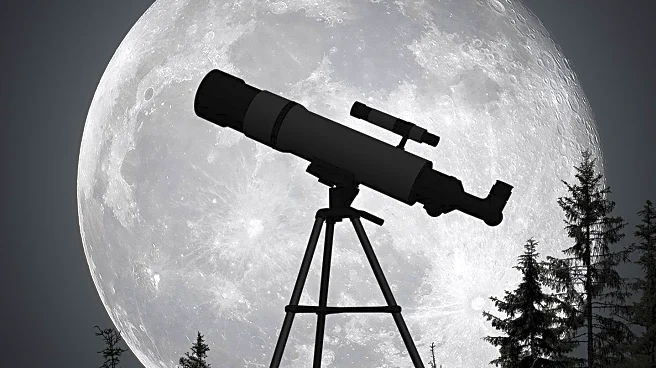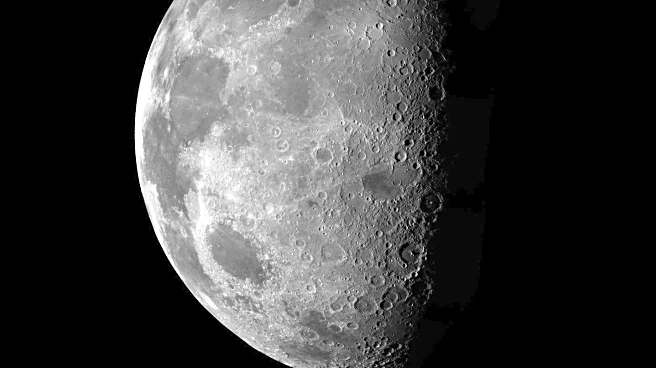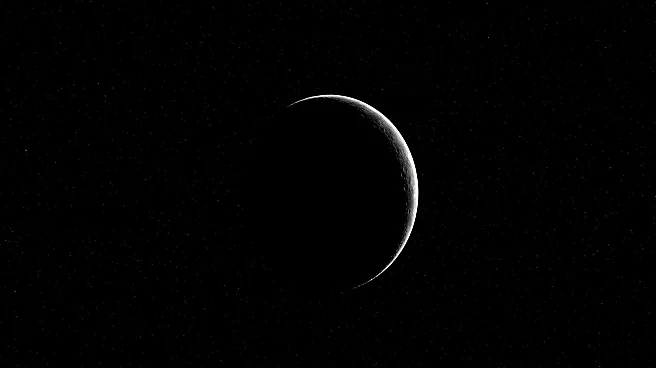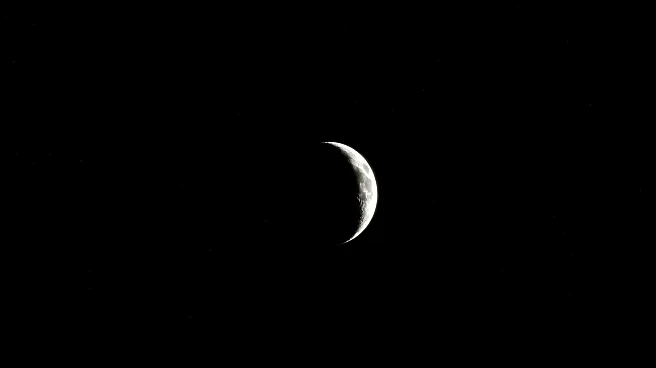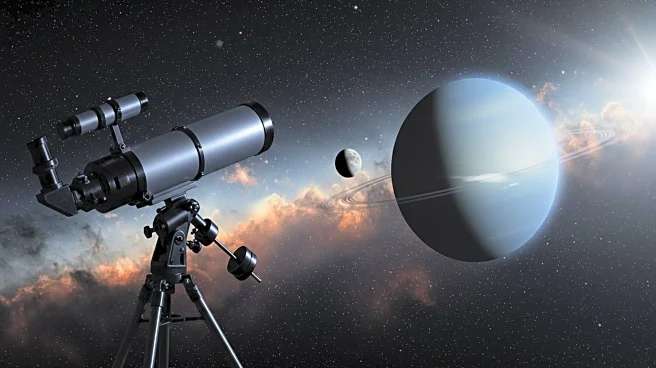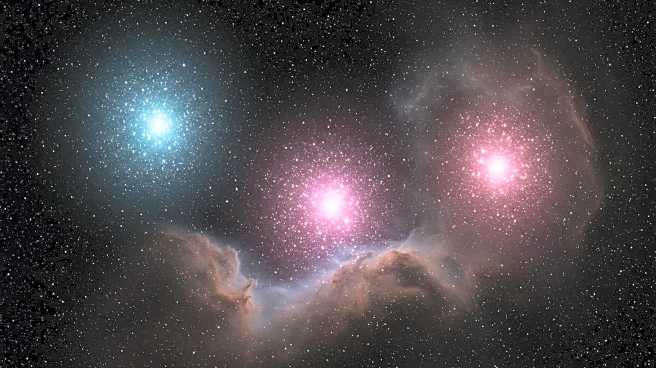Rapid Read • 8 min read
On August 23, 2025, a rare lunar event known as a Black Moon will occur, although it will not be visible to the naked eye. This event is characterized by the third new moon in a season that contains four new moons, a phenomenon that happens approximately once every 33 months. The Black Moon will pass through its new moon phase at 2:06 a.m. EDT, positioned in the constellation Leo, just 1 degree north of the sun. The occurrence of four new moons in the summer season of 2025, starting from June 25, makes this event particularly unusual. The term 'Black Moon' is not an official astronomical term but is used to describe these rare timings of new moon phases.
AD
The Black Moon event is significant for astronomers and skywatchers due to its rarity and the unique conditions it presents. While the moon will be invisible during this phase, the days following the Black Moon will offer a chance to observe the thinnest crescent moon, a delicate silver arc visible shortly after sunset. This event highlights the intricacies of lunar cycles and their alignment with the calendar, offering educational opportunities for those interested in astronomy. It also serves as a reminder of the natural phenomena that occur beyond our usual perception, encouraging interest and engagement in celestial events.
Following the Black Moon, observers can look forward to viewing the crescent moon on the evenings of August 24 and 25. This will be visible on the western horizon about 30 to 40 minutes after sunset. The next occurrence of a Black Moon, defined as the second new moon in a single calendar month, is expected on August 31, 2027. These events continue to provide opportunities for skywatchers to engage with and learn about lunar cycles and their effects on the night sky.
The Black Moon event underscores the complexity of lunar cycles and their impact on cultural and scientific understanding of celestial phenomena. It invites reflection on how these cycles have historically influenced human activities, from agriculture to navigation. Additionally, it highlights the importance of astronomy in expanding our knowledge of the universe and fostering a sense of wonder about the natural world.
AD
More Stories You Might Enjoy
